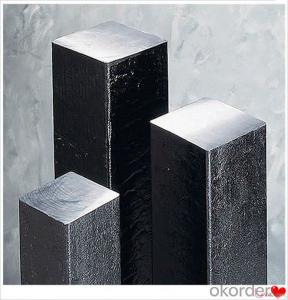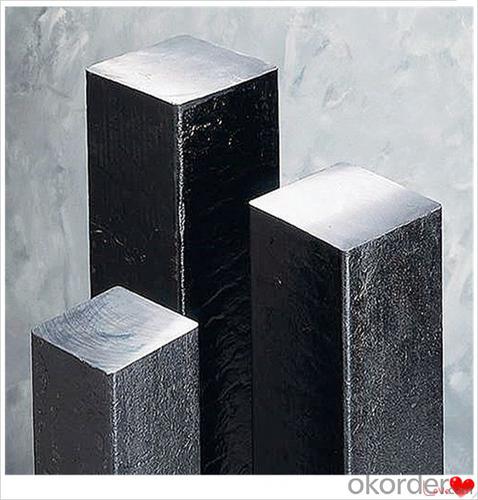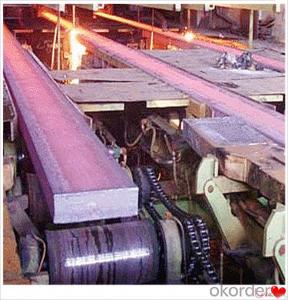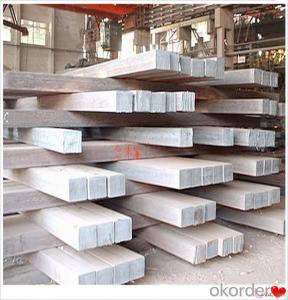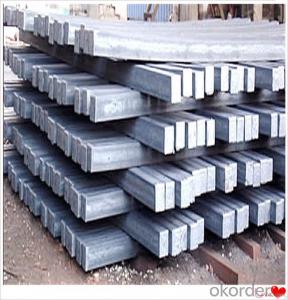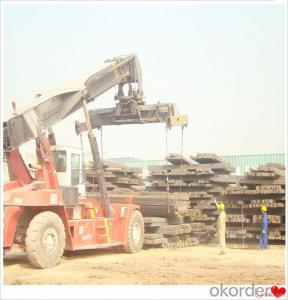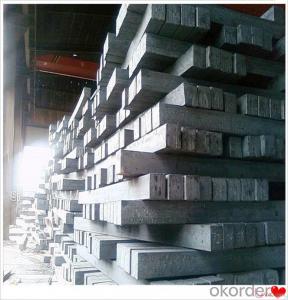Clamps Billet Aluminum Q235,Q255,Q275,Q345,3SP,5SP,20MnSi
- Loading Port:
- China main port
- Payment Terms:
- TT OR LC
- Min Order Qty:
- 20 m.t.
- Supply Capability:
- 200000 m.t./month
OKorder Service Pledge
OKorder Financial Service
You Might Also Like
Clamps Billet Aluminum Q235,Q255,Q275,Q345,3SP,5SP,20MnSi
Specification
Steel billet(ingot) by cogging or breakdown of semi-finished products, is the raw material of all kinds of steel mill. Billet section of square, round, flat, rectangular and abnormity of several kinds of, mainly related to the shape of rolled products.
CNBM Q235,Q275,Q345,3SP,5SP,20MnSi Billets Steel
Hot Rolled Steel Billets/ Mild Steel Bar/ Billet Steel
Specification (see below)
Standard: GB/JIS/ASTM
Size: 50*50mm-180*180mm
Length: 3-12mtrs or Customised
Steel material: Q235,Q255,Q275,Q345,3SP,5SP,20MnSi
Technique: Hot rolled
FOB Unit Ton Price $250-350 and Usually I will quote you CFR price.
MOQ: Usually 1000-10000MT/size
Shipment:By Container,Bulk Vessel
Packaging Details: bundles with steel strips or as customers's requirements
Delivery time: Usually within 30 days after the deposit/LC
Inspection:Third party inspection before loading.
Technical data
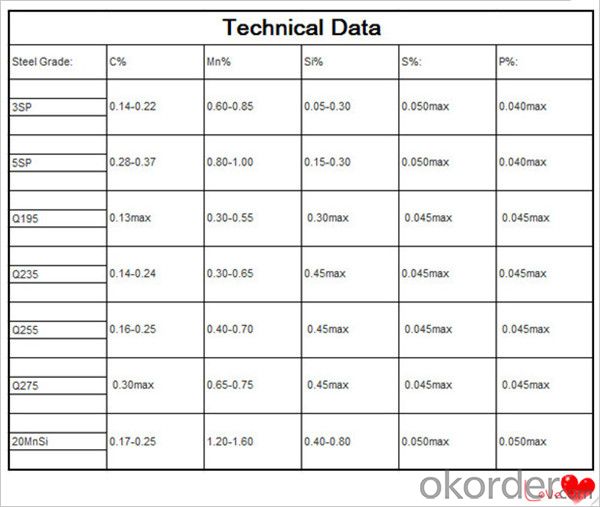
Feature Steel Billet
Rectangular billet continuous casting billet and mainly general carbon steel, low carbon low silicon cold-rolled material, high quality carbon structural steel, high strength low alloy steel, special steel, etc.
The billet is mainly divided into two kinds from the shape:
Slab: cross section width and height of the ratio of the larger, mainly used for rolling plate.
Billet: equal cross section width and height, or a huge difference, mainly used for rolling steel, wire rod. ,
Steel billets have distinct characteristics as compared with already furnished steel bars and products. Billets have a specific grain structure, which enables the metal to be processed more intricately. Steel billets are also known for their malleability and ductility, especially when exposed to varying temperatures during shaping and molding.
Packaging & Shipping
1. Packaging:
1) Small size: in bundles
2)Big size: in bulk
3)in plastic packing or as per customer requirement
2. Delivery time:
1) Normal size: within 7days send from warehouse directly
2) Special size: with 25-30days customer made for you
3. Trade terms:FOB/CFR/CIF
4. Shippment:
1) length:≤5.8m loaded in 20FT Container with 25-27tons
2) length:≤11.8m loaded in 40FT Container with 25-27tons
3) lengnth:≥12m shipped by bulk vessel, FILO terms
Steel Billet Images
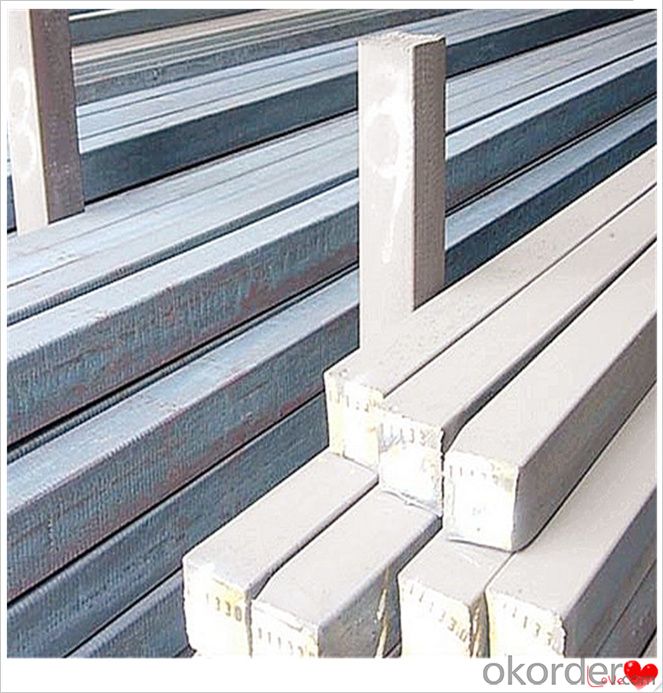
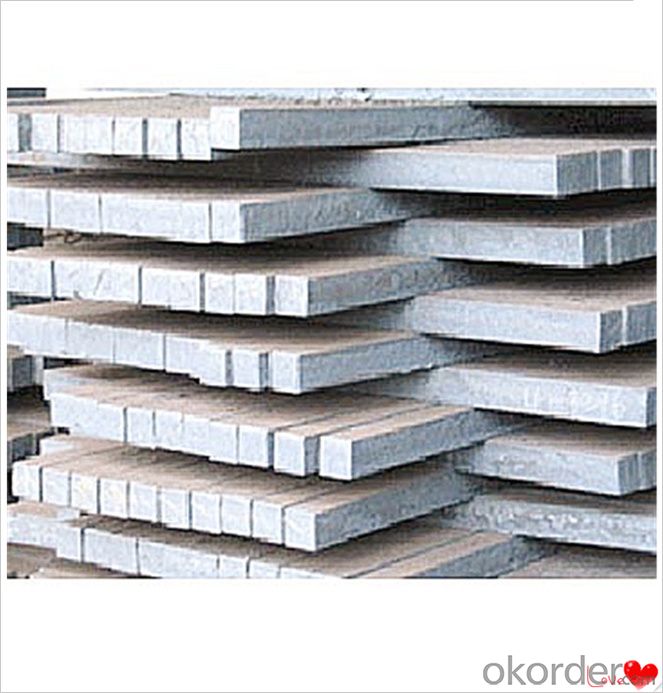
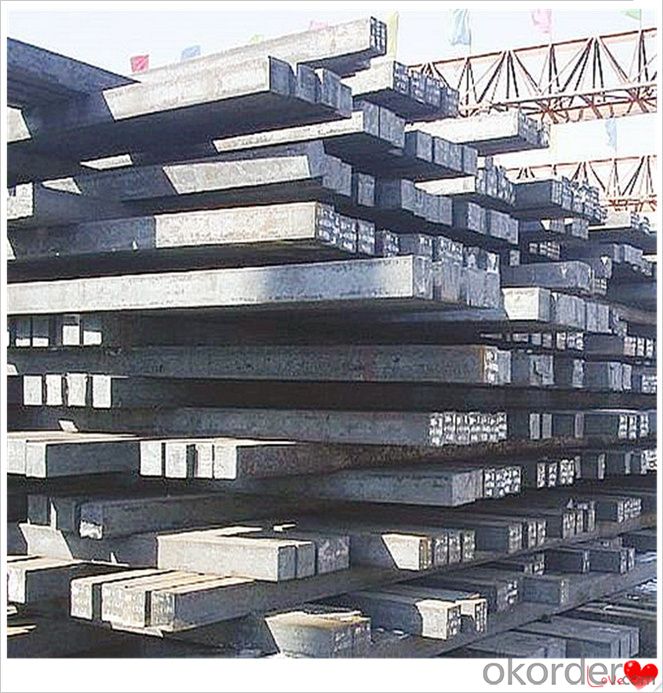
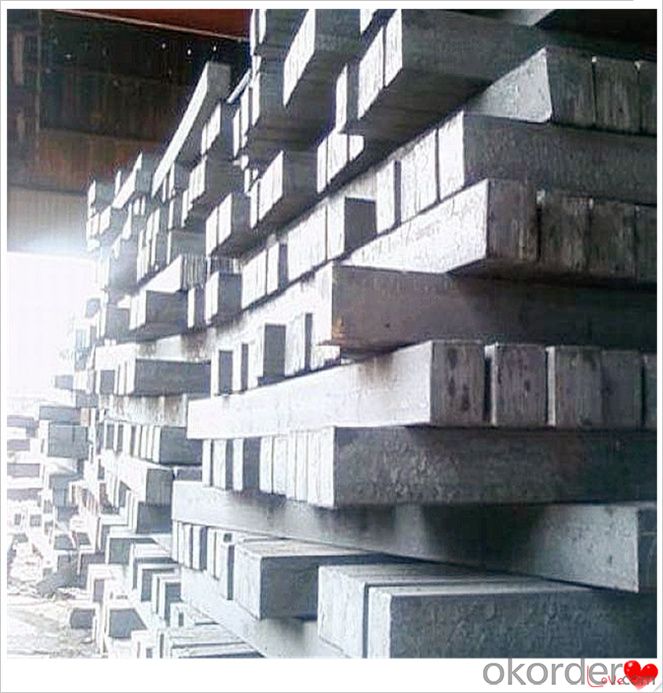
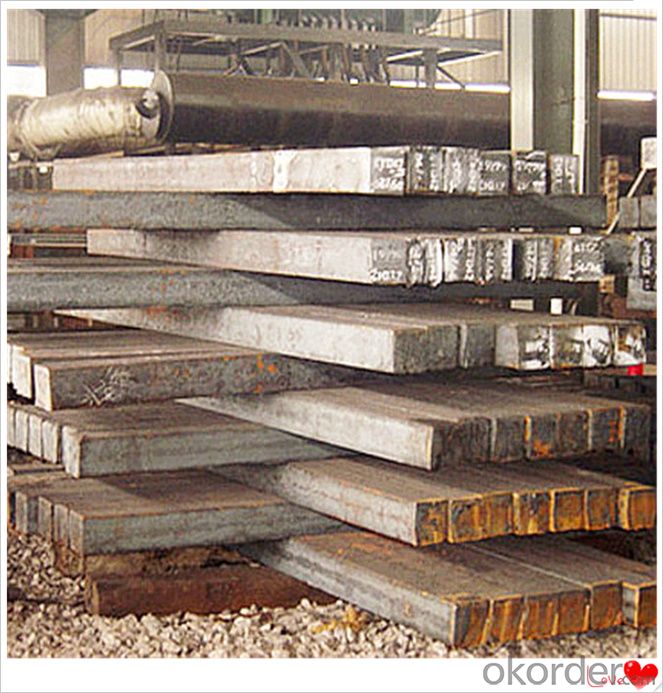
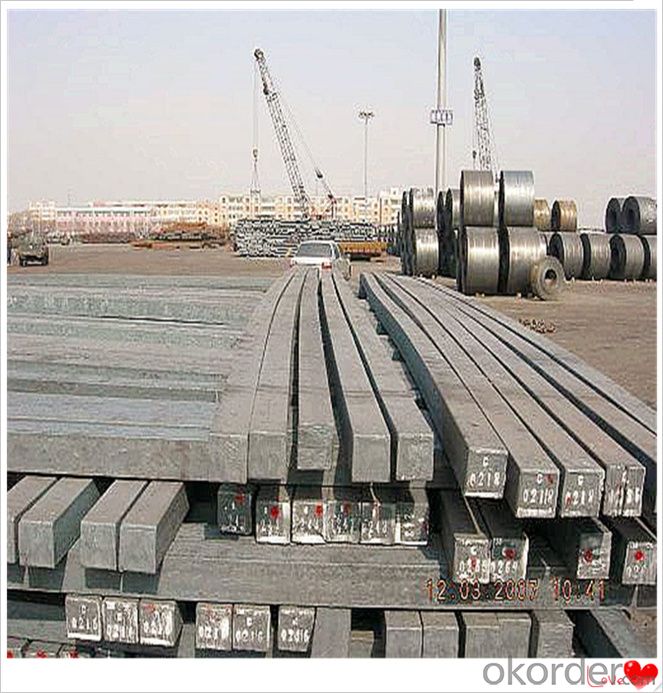
Processing
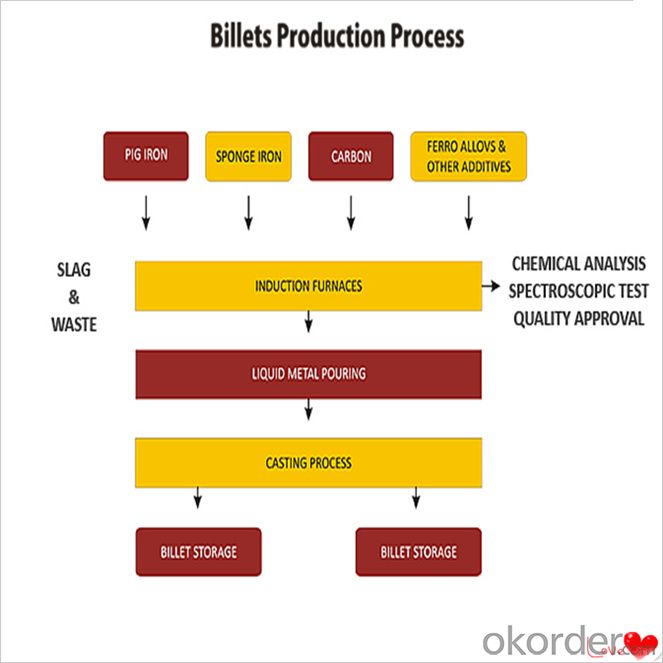
Usage-Billet Steel
Used for the plant, the bridge,shipment building high-rise building construction,lifting and transportation machinery, equipment manufracturing base building the support foundation pile manufacturing.
Billets, or ingots (as they sometimes referred to), are not of practical use until they have been formed into more functional shapes and sizes. While they have already been put in the furnace, they still require a series of shaping and molding procedures such as hot and cold working, milling and cutting before they are sold in hardware stores, or used for different applications. The unformed billets, however, can be used in striking currency such as coins and as reserves, similar to gold bars.
FAQ-Billet Steel
We have organized several common questions for our clients,may help you sincerely:
1) How about your company?
A world class manufacturer & supplier of castings forging in carbon steel and alloy steel,is one of the large-scale professional investment casting production bases in China,consisting of both casting foundry forging and machining factory. Annually more than 8000 tons Precision casting and forging parts are exported to markets in Europe,America and Japan. OEM casting and forging service available according to customer’s requirements.
2) How to guarantee the quality of the products?
We have established the international advanced quality management system,every link from raw material to final product we have strict quality test;We resolutely put an end to unqualified products flowing into the market. At the same time, we will provide necessary follow-up service assurance.
3) How long can we receive the product after purchase?
In the purchase of product within three working days, We will arrange the factory delivery as soon as possible. The pecific time of receiving is related to the state and position of customers.Commonly 7 to 10 working days can be served.
4)Do you have your own QC department?
Yes, we have, our QC department will inspect the goods during the process of mass production and after completion of production.
hot sale!!! Cast Steel Grades/ mild steel bar/ billet steel
(1): High quality steel with reasonable price.
(2): Wide excellent experiences with after-sale service.
(3): Every process will be checked by responsible QC which insures every product's quality.
(4): Professional packing teams which keep every packing safely.
(5): Trial order can be done in one week.
(6): Samples can be provided as your requirements.
- Q: What are the main factors affecting the metallurgical properties of steel billets?
- There are several main factors that affect the metallurgical properties of steel billets. These factors include the composition of the steel, the heat treatment applied, the presence of impurities, and the cooling rate. The composition of the steel plays a crucial role in determining its metallurgical properties. The amount of carbon, as well as the presence of other alloying elements such as manganese, chromium, and nickel, can significantly impact the steel's strength, hardness, and ductility. Different compositions can also affect the steel's ability to resist corrosion or exhibit magnetic properties. Heat treatment is another important factor that affects the metallurgical properties of steel billets. This process involves heating the steel to a specific temperature and then cooling it at a controlled rate. Heat treatment can alter the microstructure of the steel, which in turn affects its hardness, toughness, and overall mechanical properties. Different heat treatment methods, such as annealing, quenching, and tempering, can be applied to achieve desired metallurgical properties. Impurities present in the steel can also influence its metallurgical properties. Common impurities include sulfur, phosphorus, and oxygen. These impurities can negatively impact the steel's mechanical properties, such as reducing its strength and ductility. Therefore, the level of impurities needs to be minimized to ensure the desired metallurgical properties. Lastly, the cooling rate during the solidification process plays a crucial role in determining the microstructure and properties of the steel billets. Rapid cooling, such as in the case of quenching, can result in a fine-grained microstructure, which enhances the steel's strength and hardness. On the other hand, slow cooling, such as during annealing, can lead to a coarse-grained microstructure, which improves the steel's ductility and toughness. In conclusion, the main factors affecting the metallurgical properties of steel billets include the composition of the steel, the heat treatment applied, the presence of impurities, and the cooling rate. These factors are interrelated and need to be carefully controlled to achieve the desired properties for different applications.
- Q: What is the role of steel billets in the manufacturing of cutting tools?
- The manufacturing of cutting tools heavily relies on steel billets. These billets act as the primary material from which the cutting tool is forged or machined. Typically, steel billets are composed of high-quality steel alloys, which possess vital properties like hardness, toughness, and wear resistance that are necessary for cutting tools. To initiate the manufacturing process, the steel billets are heated to a specific temperature called the forging temperature. This temperature allows the steel to become malleable, making it easier to shape and mold into the desired cutting tool. The heated billets are then subjected to a forging process using specialized equipment, where they are struck or pressed to shape them into the desired form, such as drills, saws, or blades. Following the initial forging, the billets undergo further machining to refine their shape and dimensions. Machining processes like milling, turning, and grinding are employed to eliminate excess material, achieve precise dimensions required for the cutting tool, and create the desired cutting edge geometry. The quality of the steel billets used in the manufacturing process significantly impacts the performance and durability of the cutting tool. Steel billets with high carbon content and alloying elements like chromium, vanadium, or tungsten are often preferred as they enhance the hardness, strength, and wear resistance of the cutting tool. These properties are essential to ensure that the cutting tool can withstand the high forces, temperatures, and abrasive conditions it will encounter during use. In conclusion, steel billets serve as the foundation for manufacturing cutting tools. They provide the necessary raw material and properties required to create high-quality cutting tools that demonstrate exceptional performance, durability, and precision.
- Q: Charcoal classification
- Hard charcoal. By hardwood such as Fagaceae Quercus, Castanopsis trees, secondary birch and etc..Broad-leaved charcoal. Charcoal made from a mixture of hard and soft hardwood.Pine charcoal. Carbon fired from pine or other needle wood. In addition to bamboo and bamboo charcoal burning with shells, stones (coconut shell, peach stone charcoal etc.) wood raw material firing. Charcoal collected from household stoves in the cell known as carbon. If the charcoal is crushed and mixed with proper adhesive, and then pressed, formed and roasted, the deposit is made. According to the burning process of silica and carbon black.
- Q: Can steel billets be heat treated for increased hardness?
- Yes, steel billets can be heat treated to increase hardness. Heat treatment processes such as quenching and tempering can be used to alter the microstructure of the steel, resulting in improved hardness and other mechanical properties.
- Q: How do steel billets contribute to the manufacturing of renewable energy equipment?
- Steel billets are an essential component in the manufacturing of renewable energy equipment, such as wind turbines and solar panels. These billets are used to create sturdy and durable structures, including tower bases for wind turbines and frames for solar panels. Additionally, steel billets are crucial in the production of transmission and distribution infrastructure required for renewable energy systems. Their strength and versatility make them an indispensable material in the renewable energy industry, enabling the efficient and reliable generation of green energy.
- Q: How are steel billets rolled into rails?
- The process of hot rolling is employed to transform steel billets into rails. This involves a sequence of steps. To begin, the steel billets are subjected to intense heat in a furnace, raising their temperature to approximately 1200°C. This elevated temperature renders the steel more pliable and easier to mold. Once the billets reach the desired temperature, they are transferred to a rolling mill. Within the rolling mill, the heated steel billets are guided through a succession of rolling stands. These stands consist of pairs of sizeable rolls that gradually diminish the thickness and alter the shape of the billets. As the billets pass through each stand, the rolls apply significant pressure, causing the steel to elongate and adopt the characteristics of a rail. As the billets progress through the rolling mill, they gradually assume the dimensions of rails. The rolling process also confers strength and durability upon the rails, making them suitable for a range of applications, such as railway tracks. During the rolling process, it is common to employ water or oil to cool the rolls and prevent overheating. This cooling also aids in maintaining the desired temperature of the steel billets as they traverse the rolling mill. Once the steel billets have been transformed into rails, they are cut to the desired lengths and undergo further processing, such as straightening and heat treatment, to ensure they meet the required specifications. In conclusion, the hot rolling process is utilized to convert steel billets into rails. This entails heating the billets, guiding them through a series of rolling stands, and gradually shaping them into rails with the desired dimensions. The resulting rails are then subjected to additional processing to prepare them for various applications.
- Q: How are steel billets used in the manufacturing of construction machinery?
- The manufacturing of construction machinery relies heavily on steel billets. These billets, which are semi-finished steel products, play a vital role in the industry as they serve as the primary raw material. The production of steel billets involves a process called continuous casting, in which molten steel is poured into a mold to form solid billets. Once the steel billets are ready, they undergo a series of manufacturing processes to shape them into the desired components for construction machinery. These processes include forging, rolling, and machining. Forging requires heating the billets to high temperatures and using pressure to shape them into various parts such as gears, shafts, and axles. Rolling, on the other hand, is a commonly used method in which the billets are passed through rolling mills to reduce their size and give them specific forms such as plates, bars, or sheets. These rolled billets can then be further processed to create components like chassis, frames, or structural beams for construction machinery. In addition to forging and rolling, machining processes are employed to shape the steel billets into intricate parts with precise dimensions. This involves using cutting tools to remove excess material and create specific shapes and features like holes, threads, or grooves. Machining is crucial in producing components such as engine parts, hydraulic cylinders, or gearboxes for construction machinery. Overall, steel billets serve as the initial stage in the manufacturing process of construction machinery. They provide the necessary raw material that undergoes various processes to become the required components. The strength, durability, and versatility of steel make it an ideal material for construction machinery, ensuring that the final product can withstand heavy loads, harsh environments, and demanding applications.
- Q: How are steel billets used in the production of aerospace components?
- Steel billets are used in the production of aerospace components as they serve as the starting material for the manufacturing process. Steel billets are essentially semi-finished steel forms that are hot-rolled or forged into specific shapes and sizes. In the aerospace industry, steel billets are typically used to produce critical components such as landing gear, engine components, structural parts, and fasteners. These billets are chosen for their superior strength, durability, and resistance to high temperatures and corrosive environments, which are crucial properties required for aerospace applications. The production of aerospace components using steel billets involves several steps. First, the billets are heated to a high temperature to make them malleable and easy to work with. They are then subjected to various forming processes such as forging, extrusion, or rolling, which shape them into the desired form. These processes allow for precise shaping and dimensional accuracy, ensuring that the components meet the required specifications and tolerances. After the initial shaping, the aerospace components are subjected to further processes such as heat treatment, machining, and surface finishing to enhance their mechanical properties and improve their surface quality. Heat treatment processes such as quenching and tempering are used to strengthen the steel and improve its hardness, toughness, and resistance to wear and fatigue. Machining processes are then employed to achieve the final shape, size, and surface finish of the components. Once the components are manufactured, they undergo rigorous quality control procedures to ensure they meet the stringent standards and regulations of the aerospace industry. This includes thorough inspections, non-destructive testing, and material analysis to verify their integrity, performance, and safety. In summary, steel billets are essential in the production of aerospace components as they provide a reliable and strong starting material. The versatility and excellent mechanical properties of steel make it a preferred choice in the aerospace industry, where reliability and safety are of utmost importance.
- Q: What are the different types of surface defects found in steel billets?
- There are several types of surface defects that can be found in steel billets. These defects can occur during the manufacturing process or due to external factors. Some of the common surface defects found in steel billets include: 1. Scale: Scale is a type of oxide layer that forms on the surface of the billet during the heating and cooling processes. It appears as a thin layer of rust-like material and can affect the quality and appearance of the steel. 2. Cracks: Cracks can occur due to improper cooling or excessive stress during the manufacturing process. These cracks can be either longitudinal or transverse and can weaken the structural integrity of the billet. 3. Pits: Pits are small depressions or cavities that can be found on the surface of the billet. They can occur due to the presence of impurities or as a result of corrosion. 4. Seam: A seam is a linear defect that can be found along the surface of the billet. It is caused by the improper joining of two sections of the billet during the manufacturing process. 5. Lamination: Lamination defects occur when there are layers or flakes of material that separate from the surface of the billet. This can be caused by improper rolling or an inadequate bonding between layers. 6. Inclusions: Inclusions are non-metallic particles or impurities that are trapped within the steel billet during the manufacturing process. These inclusions can affect the mechanical properties of the steel and reduce its overall quality. 7. Decarburization: Decarburization is a surface defect where the carbon content of the steel is reduced, leading to a softer and weaker surface layer. This can occur due to improper heating or cooling processes. It is important to detect and address these surface defects in steel billets to ensure the quality and performance of the final steel products. Various inspection methods and quality control measures are employed during the manufacturing process to minimize the occurrence of these defects.
- Q: Are steel billets prone to cracking during production?
- Yes, steel billets are prone to cracking during production. Due to the high temperatures and rapid cooling involved in the production process, internal stresses can develop in the billets, leading to cracks. Proper handling, heat treatment, and quality control measures can help minimize the risk of cracking.
Send your message to us
Clamps Billet Aluminum Q235,Q255,Q275,Q345,3SP,5SP,20MnSi
- Loading Port:
- China main port
- Payment Terms:
- TT OR LC
- Min Order Qty:
- 20 m.t.
- Supply Capability:
- 200000 m.t./month
OKorder Service Pledge
OKorder Financial Service
Similar products
Hot products
Hot Searches
Related keywords
